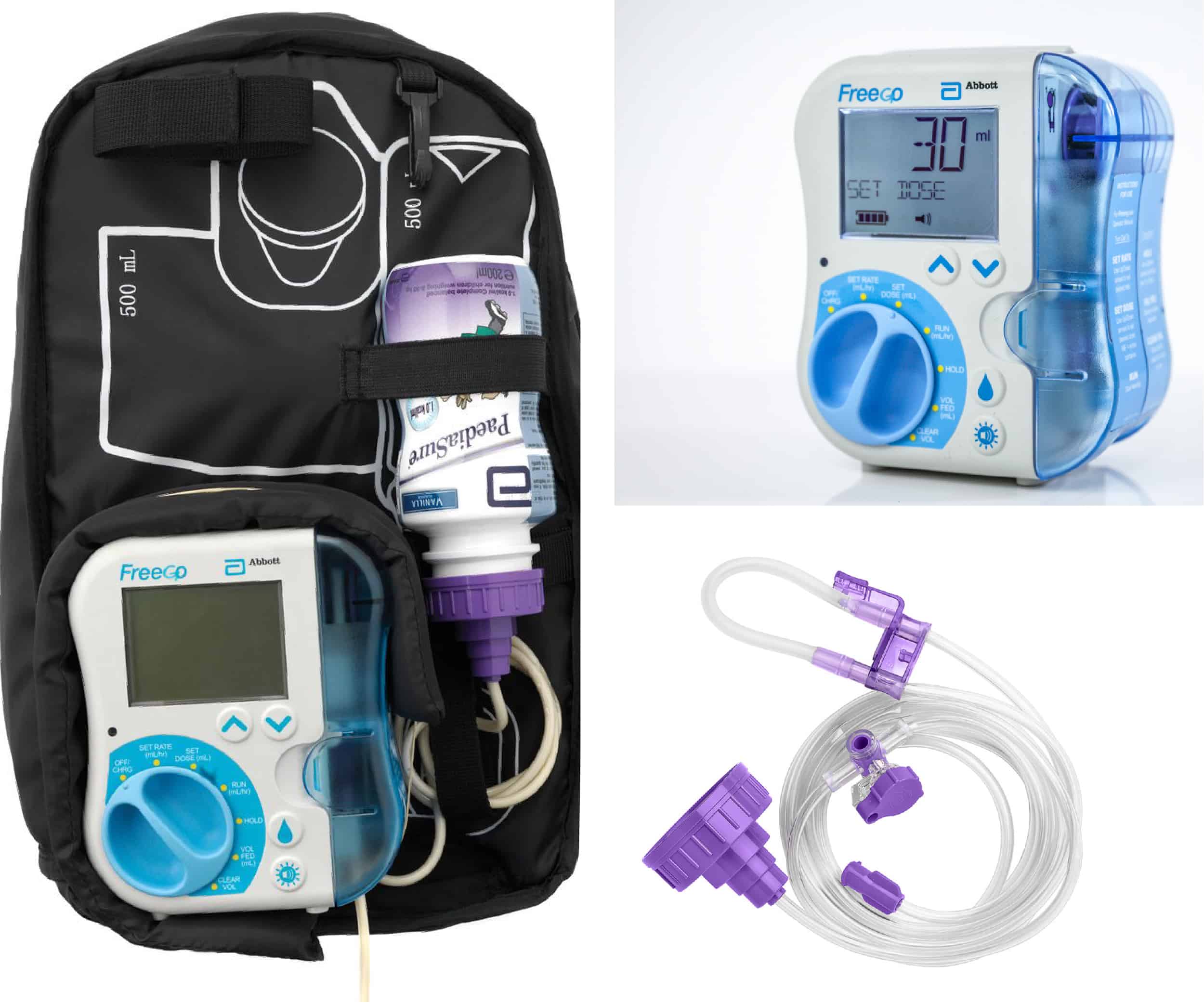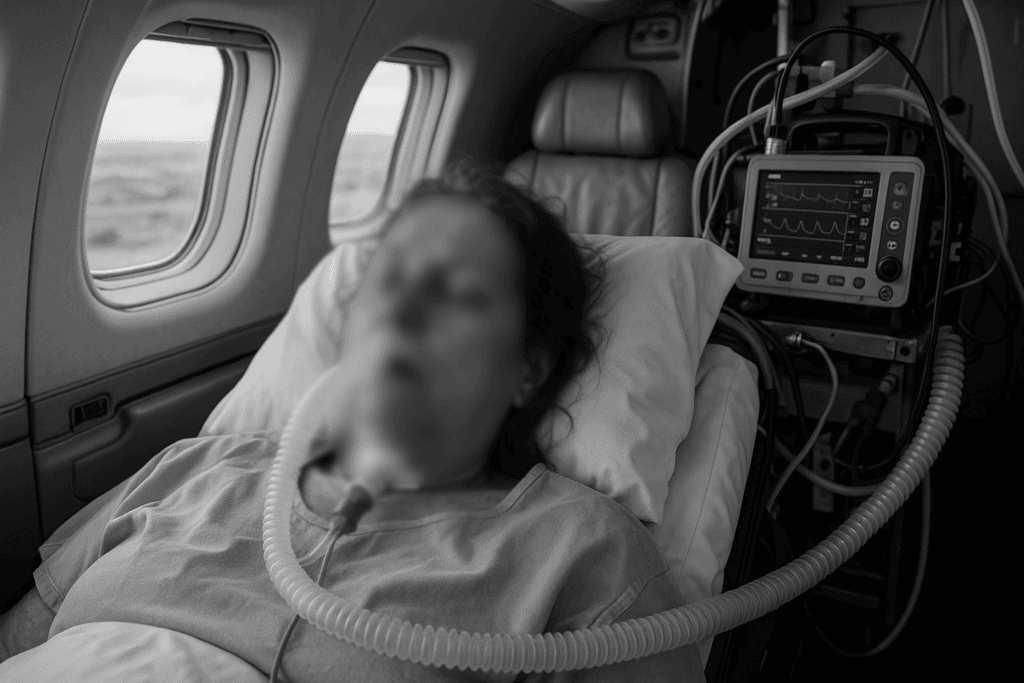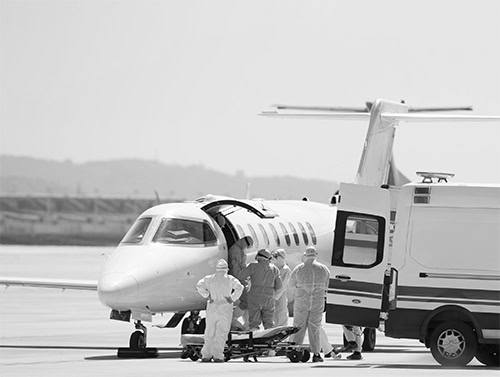Air travel and enteric feeding (Feeding tubes and pumps)
There are many clinical scenarios in which patients need to be administered nutrition through tubes, either through the nose/mouth or directly to the stomach/intestine with surgically created openings (gastrostomy/jejunostomy). They may need it continuously, or sometimes, intermittently. Feeding is usually provided in a controlled manner in an in-hospital setting. Even though it’s logistically and clinically challenging to provide the same in a pre-hospital setting and during air travel, it can be delivered with the proper equipment and adjuncts.
The first and most important equipment is an industry-standard Feeding Pump. This has to be compact, lightweight, and battery-operated. It is important to ensure that the giving set/feeding set is compatible with the tube which is already on the patient. A sufficient number of feeding sets must be transported for the duration of the trip, and additional feeding pumps may also be required as a backup, depending on the length of the journey.
Administering the feed via the feeding pump in the pre-hospital setting and inside a commercial aircraft or an air ambulance becomes challenging because of the space constraints for setting up the system, the non-availability of IV stands, etc. Portable IV stands can be used to overcome this challenge.
During air travel, compact foldable IV poles can be used to secure the feeding bag and the feeding pump in an orderly manner and may be moved around as well, albeit with caution. Additionally, a portable backpack can also be considered in case the feed has to be administered while on the move.
Inside a private aircraft or air ambulance, the system can be set up without much hassle. However, during commercial flight travel, different strategies have to be adopted depending on the patient and the cabin space available. For instance, in the case of a neonate with a feeding requirement, baby cots can be made available onboard, and an S-shaped hook can be used to hang the feeding bag from a neighboring seat. In a business class adult patient, we can use the portable IV pole to set up the system. On commercial flight stretchers, an IV pole is often available onboard, and if not, the portable one can be used. Even with the information stated above, the requirements of the patient have to be addressed as per need, and the same has to be delivered with care during the travel. As always, it can be achieved by meticulous planning and a thorough pre-transfer evaluation, through which a tailor-made plan can be laid down for that particular case. Adapting to the dynamic situation and providing the journeys of care is what matters at the end of the day.



